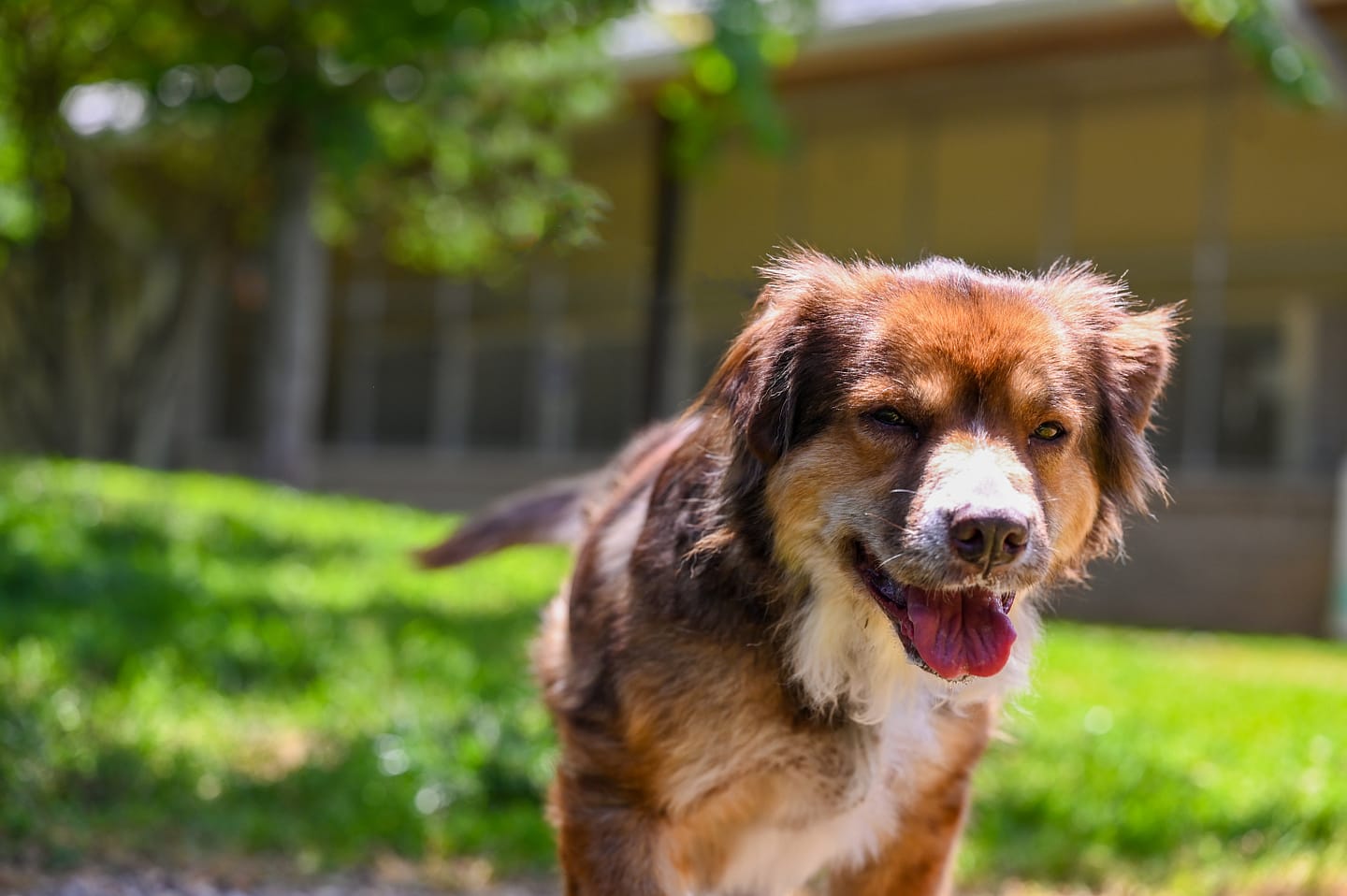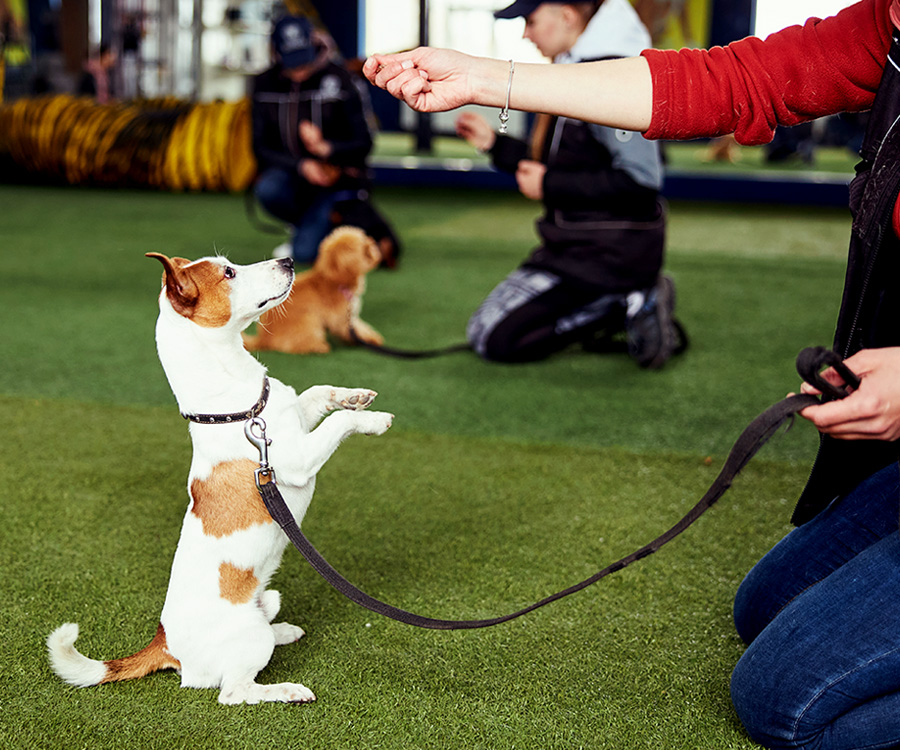Vital Tips for Effective Dog Training: An Overview for Family Pet Owners
Efficient pet dog training is a complex process that needs a calculated method tailored to both the pet dog's character and the owner's purposes. Comprehending how to browse these challenges can substantially enhance the training experience, inevitably changing the relationship in between owner and pet.
Comprehending Canine Habits
Comprehending pet dog actions is vital for reliable training and fostering a harmonious connection in between canines and their owners. dog training. Pets communicate largely via body language, articulations, and actions, making it important for proprietors to analyze these signals accurately.

Socializing plays a substantial duty in pet actions; direct exposure to numerous environments, people, and other animals can considerably impact a dog's personality. Moreover, elements such as type attributes and specific temperament need to assist training methods, as some breeds might have details behavioral traits that necessitate tailored strategies. By comprehending these aspects, owners can develop a helpful setting that encourages favorable habits, leading to effective training results and a much deeper bond with their pets.
Developing Regular Commands
Effective communication with your pet dog begins with establishing regular commands. This foundational component of training is critical for fostering understanding in between you and your family pet. Uniformity in the commands you make use of makes certain that your dog can accurately link particular words or expressions with the wanted behaviors.
When picking commands, pick clear, distinctive words that are very easy to set apart and say from one an additional. Stay clear of making use of similar-sounding commands that may puzzle your dog. For instance, utilizing "rest" and "stay" is ideal, but "rest" and "hit" might cause misunderstandings.
Furthermore, keep the exact same tone and quantity for every command. Pet dogs are sensitive to vocal signs, so differing your tone can develop complication.
It is just as vital to make sure that all member of the family are on the same page pertaining to the commands used. A united front in command usage will protect against mixed signals and strengthen the understanding procedure.
Favorable Reinforcement Methods
The power of positive support in pet dog training hinges on its capacity to urge preferred actions via benefits and appreciation. This strategy is grounded in the principle that actions complied with by positive results are more most likely to be repeated. By incorporating positive reinforcement into your training regimen, you can successfully form your dog's behavior in a positive fashion.
To execute positive reinforcement, it's important to identify what motivates your canine, whether it be treats, playthings, or spoken appreciation. When your pet executes a wanted activity, such as remaining on command, instantly award them with a reward or affection. This organization in between the command and the favorable end result enhances their understanding.
It's essential to timing the benefits appropriately; providing the reinforcement within secs of the preferred behavior aids your dog make the link (dog training). Additionally, uniformity is crucial-- make sure that all member of the family use the very same commands and reward systems to prevent complication

Slowly, you can decrease the regularity of treats as your pet dog finds out the habits, transitioning to commend go to the website or periodic incentives. This method not just cultivates a solid bond in between you and your pet dog yet additionally advertises a favorable discovering atmosphere, making training a satisfying experience for both.
Socialization and Communication
Continually revealing your pet dog to a range of environments, individuals, and other pets is essential for their social development. Socialization needs to start early, ideally throughout the essential home window of 3 to 14 weeks, when young puppies are most receptive to brand-new experiences. Older dogs can also benefit from ongoing socializing initiatives.
Present your pet to various setups, such as parks, pet-friendly shops, and metropolitan locations. This exposure helps them adapt to various stimulations, reducing anxiety and fear responses. Encourage favorable communications with various other pets and individuals, guaranteeing that these encounters are controlled and safe to foster confidence.
Utilize structured playdates with well-mannered pets, as this can improve your canine's social abilities and show them appropriate actions. Obedience courses and training sessions also give outstanding opportunities for socializing, enabling your canine to interact with others in a monitored environment.
Display your pet dog's body language throughout interactions, as this will certainly assist you determine their comfort degree. Gradually boost exposure to even more challenging circumstances while ensuring that each experience declares. A well-socialized dog is more probable to display well balanced behavior, making them a happiness to have in any kind of setting.
Resolving Typical Training Difficulties
Every dog owner will certainly encounter training difficulties at some time, despite their pet dog's age redirected here or socializing degree. Determining usual issues such as stubbornness, diversions, and fearfulness can help in developing effective methods for renovation.

Distractions during training sessions can derail focus. To fight this, start training in a peaceful atmosphere with very little stimuli. Slowly present disturbances as the pet comes to be more competent in commands. Short, frequent training sessions are also effective in maintaining attention.
Terror can prevent a pet dog's discovering process. Gradual desensitization to the resource of anxiety, coupled with positive reinforcement, can aid relieve anxiousness. Persistence is important; never force a pet right into a situation that causes distress, as this might worsen the issue.
Ultimately, understanding and resolving these typical difficulties with a structured strategy will foster an extra efficient training experience, strengthening the bond in between pet and look at this website proprietor while advertising efficient knowing.
Verdict
In summary, successful pet training relies upon an extensive understanding of canine actions, the establishment of regular commands, and the application of positive reinforcement methods. Socializing plays an important duty in developing well-adjusted animals, while attending to common training difficulties calls for patience and adaptability. By carrying out these important methods, pet dog owners can promote a strong bond with their pet dogs and advertise desirable actions, ultimately bring about an unified relationship in between human beings and their canine companions.
Recognizing dog habits is crucial for effective training and promoting an unified relationship between pooches and their proprietors.Socialization plays a considerable function in pet behavior; exposure to different settings, individuals, and other animals can substantially influence a dog's temperament.The power of positive reinforcement in pet dog training exists in its capacity to urge desired behaviors through benefits and praise. By integrating favorable support right into your training routine, you can properly form your dog's behavior in a constructive manner.
In summary, successful canine training depends on an extensive understanding of canine habits, the establishment of constant commands, and the application of positive reinforcement techniques.